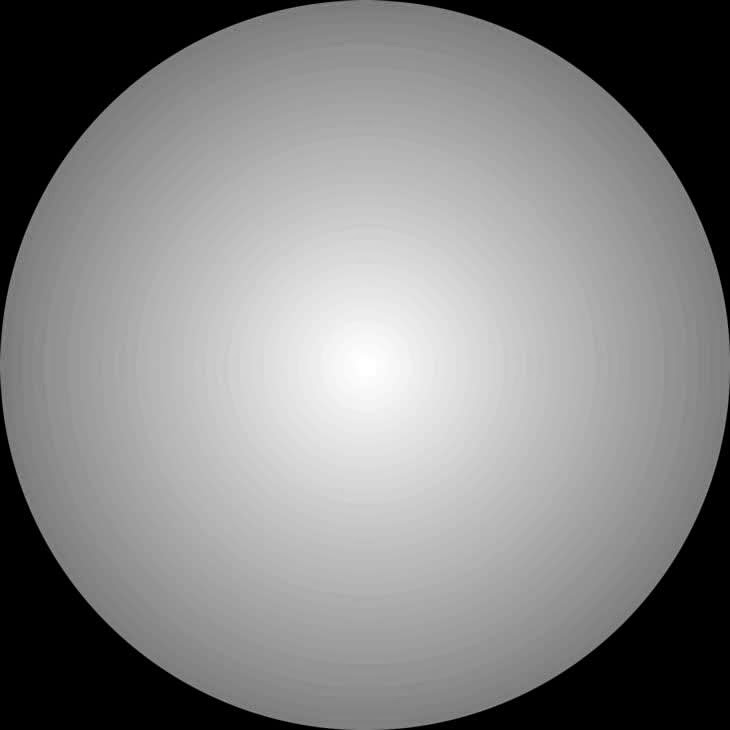 |
| Remember when I said colours of equal value look like the same shade of grey? Look at the Colour Wheel now. |
The normal reasons for painting like this is for environments like stone formations or cities, either for terrain or for bases. A practical reason for painting greyscale on a miniature would be some form of camouflage, either natural (mountain beasts) or man-made by people living or fighting in these areas. You'll also find these schemes in nature for general reasons: wolf pelts, seals, whales, polar / black / panda bears, etc.
Some reasons you'd paint these compositions would be if you're painting an object that's normally White and/or Black, painting something that's normally composed of Greys or painting something that should have colour artistically.
There are different ways that you can paint a greyscale miniature or scene, each which has a strong impact on the way it comes across to the viewer.
When you're choosing the amount of Black, White and Grey to use, here's some things to consider:
 |
| Created with painter from Bolder & Chainsword |
- Amount of Black and White (Before Shading and Highlighting)
- Will your model be mostly Black or White?
- If both, will you balance the amount?
- Amount of Grey Scale (Before Shading and Highlighting)
- Will your model be composed of mostly greys instead of strong Black and White?
- High Contrast
- Less Greys and areas are strongly defined as either black or white.
- This will appear more powerful.
- Low Contrast
- More Greys and more blending between highlights and shades.
- A softer, pleasing look.
- Strength of Shadows and Highlights
- After you've decided the composition of what your model looks like, you'll need to add Shadows and Highlights.
- Keep the above mentioned things about Black, White and Grey in mind as you decide how powerful your shadows and highlights are going to be.
Ex: Your bold White areas can be painted with deep black shadows for an even stronger contrast or they can be shaded with ranges of more pleasing greys. - Background
- Try to paint the background so that your model stands out.
Ex: If your model is mostly Black, consider a lighter background.
For example, you could choose to paint something mostly Black (Like a Black Bear) but then decide to use a wide range of greys to artfully paint the black.
The actual act of painting this miniature can be tricky as Black and White are some of the hardest things to pull off.
The actual act of painting this miniature can be tricky as Black and White are some of the hardest things to pull off.
- Shading and Highlighting them can very easily appear unnatural.
- A Black wash is a safe way to shade White and Dark Grey is a safe way to highlight black, but not perfect.
- Pigments offer some of the most natural ways to highlight and shade darks and lights.
- Stippling is another useful way to layer paints to blend them.
Painting Greyscale
I'm going to show off a couple styles of applying both greyscale and black and white paint jobs. This week I'm not using a Marine because I wanted to add a little more "physical" style.
In the photos below, I start by priming him white, then painting his skin and axe head black.
Next, I've washed a few areas black - his helmet, loin cloth and the hair on his boots.
In the final photo, I'm showing 2 steps:
- Highlighted helm, loin cloth and boot hair with P3 White. (Brighter white.)
- Rubbed Black Pigment on his horns, cuffs, belt, axe handle and boots, then highlighted with White Gesso. (Duller "off" white.)
You could stop here. This creates more what I call a "Black and White" or higher contrast style. I'd probably add a small highlight to the black skin, though natural light is showing you what I'm talking about for now. The rest of the white stands out nicely.
But I'm not going to stop there.
Black can be one of the hardest things to paint because of the highlight. I've stopped using paints and instead use pigments.
Start by rubbing some on with a disposable eyeliner tool, (think felt-tip pen without the ink.) then rub more gently on the edges to soften the blend. This creates some beautiful, soft and varied highlighting.
Another outcome is there are now 3 shades of white being used as a highlight and therefor 3 sets of "greyscale." That adds another layer of intricacy, pleasing to the eyes.
In the final photo, I've varnished him. VERY important to be aware that varnishing pigments will cause them to liquify and turn in to a paint / wash. Look at how his skin changed from above to below. Being a liquid, it also blends a little more. Varnishing pigments is a double-edged sword. If you do, the final product changes; if you don't, the powder will continue to rub off every time you handle the model. When you do varnish pigments, airbrushing / spraying it on looks best because a paintbrush will rub and push the powder around.


